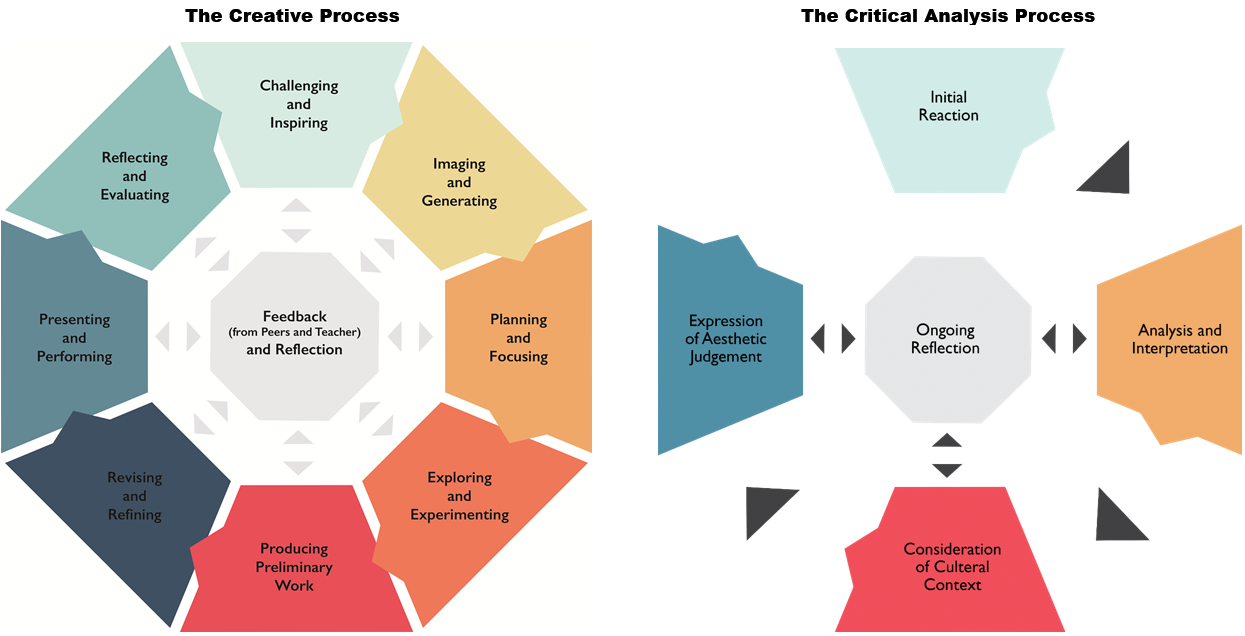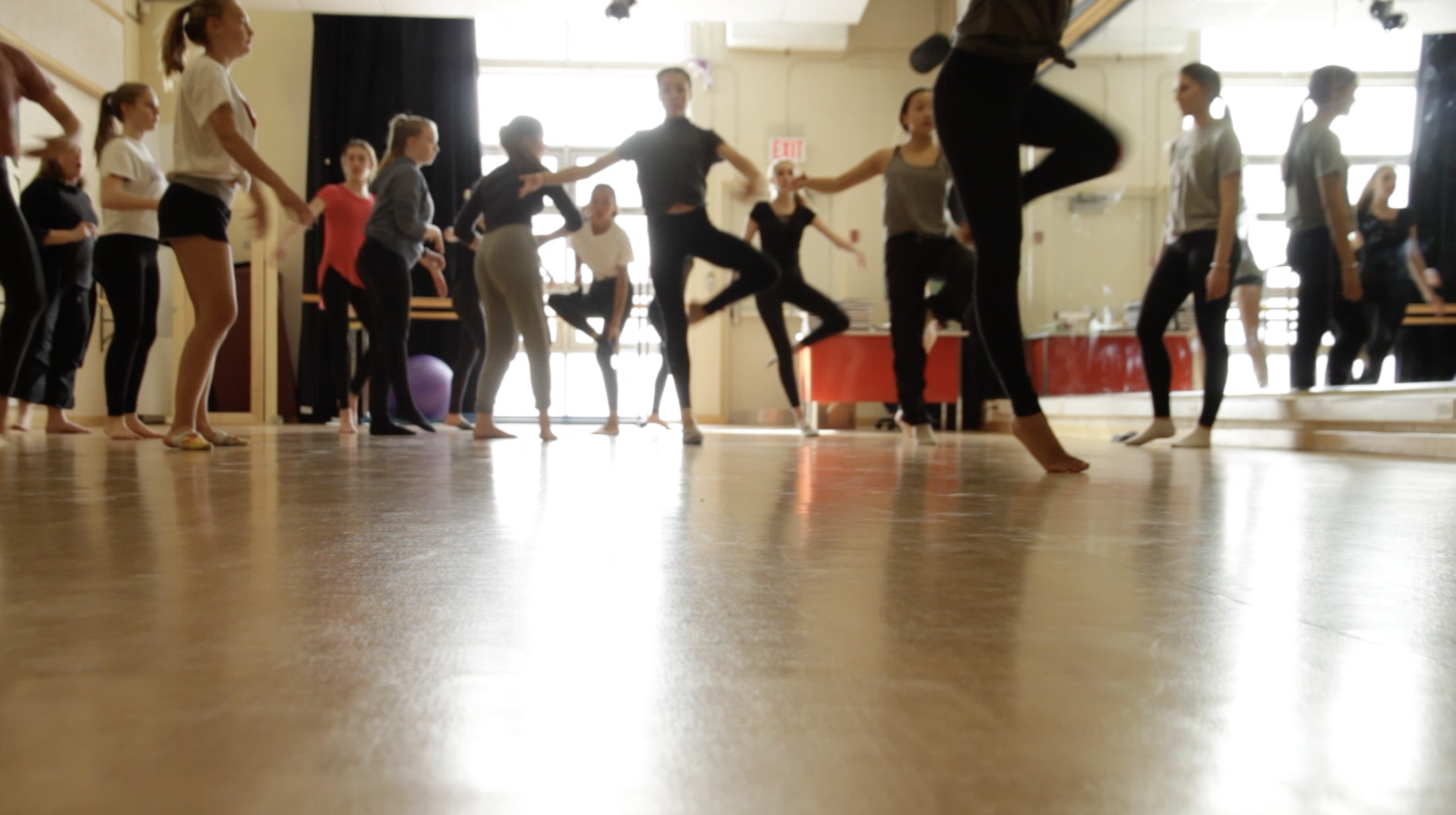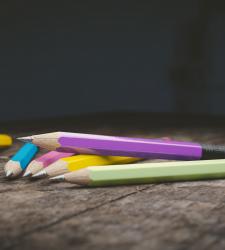There are many options in secondary school for students to deepen their learning in, through, and about the arts.
Arts Courses - In secondary school, every student is required to take at least one arts credit as part of their Ontario Secondary School Diploma. Students can choose arts courses available at their school from five different areas: dance, drama, media arts, music and visual arts. The Ontario Secondary Arts Curriculum expectations for dance, drama, music and visual arts are designed to allow schools to develop courses that focus on particular aspects or areas of the subject, for example, ballet, photography or musical theater. Check out the Pathways Planner to see what courses are available at your school.
The Ontario Secondary Arts Curriculum documents outline:
- curriculum expectations
- fundamental concepts in the Arts
- the creative process
- the critical analysis process
- how students and parents can support Arts learning, and more

The Arts in Secondary School
Students can choose from courses in five different disciplines (check to see which courses are available at your secondary school). Every student is required to take at least one arts credit as part of their Ontario Secondary School Diploma.
Dance goes beyond the study of movement. Dance transforms images, ideas, and feelings into movement sequences. Students:
- Learn about self-expression through the body.
- Build self-confidence when they connect physical expression with emotions, values, thoughts and beliefs.
- Learn about the dynamic relationship between process and product through creating their own choreography and interpreting existing dance works.
- Develop their understanding of the role of dance in various cultures, societies and historical periods.
 Students at Huron Heights Secondary School rehearsing a dance routine.
Students at Huron Heights Secondary School rehearsing a dance routine.
Drama provides students with an opportunity to take on roles and to create and enter into imagined worlds. Students:
- Are supported to discover, feel and express what matters to them.
- Explore, develop and interpret issues, situations, texts, ideas and stories through different techniques.
- Acquire proficiency in listening, speaking, questioning and problem solving by communicating in both their real and imagined worlds.
- Develop and express empathy for people in a wide range of situations through the process of taking on roles.
Four organizing principles guide the creation of media art works: hybridization, interactivity, duration and point of view.
Media arts incorporates materials, practices, tools, and skills from a variety of arts disciplines including dance, drama, music and visual arts. Students:
- Produce media artworks that communicate ideas, feelings and beliefs to specific audiences.
- Have the opportunity to reflect on the social, cultural and historical contexts of media art, which enhances their understanding of the world in which they live.
Through composition, performance and responding to music, students:
- Have the opportunity to sharpen their ability to think critically and explore their emotional understanding of the music they listen to, create or perform.
- Find in music a source of enjoyment and personal satisfaction.
- Gain creative problem-solving skills, individual and cooperative work habits, knowledge of themselves and others, a sense of personal responsibility, and connections to their communities and future careers.
While investigating and producing a variety of artworks using various media, processes, and traditional and emerging technologies, students:
- Develop their creativity and ability to communicate their understanding of the world around them.
- Will use their imagination and make creative choices to communicate their ideas, observations, feelings and values.
- Develop skills in using art tools, materials and techniques. This learning also enhances students’ ability to respond to and interpret existing works.
- Learn how art works construct and record the history, values and beliefs of various societies and cultures.
A specialized Arts program is a four-year arts program for YRDSB students who are committed to exploring and deepening their understanding, skills, and experiences in the arts. The program offers a package of specialized arts credits (two per year) that count towards the Ontario Secondary School Diploma. Students will receive a certificate upon completion. Students are invited to apply to the school that corresponds with their attendance boundary (PDF). The program is offered at four different secondary schools:
- Alexander Mackenzie Secondary School
- Huron Heights Secondary School
- Unionville High School.
- Westmount Collegiate Institute
Specialist High Skills Major in Arts and Culture is available at some secondary schools. The program, for students in Grades 11 and 12, lets students bundle arts courses with other courses to provide the academic knowledge and skills important to the arts and culture industry, and required for success in the workplace and postsecondary education, including apprenticeship.
